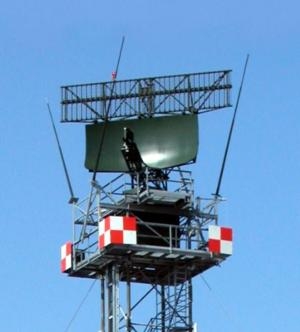Mon, Aug 24, 2015
Contract Enhances Air Traffic Control Capabilities Of The Royal Australian Air Force
Airbus Defense and Space has received two contracts worth approximately €130 million (approx $145.6 million) from Australia’s new Capability, Acquisition and Sustainment Group to equip and support nine military and civil/military Australian airfields with the world’s newest and most powerful airport surveillance sensors. Under the project “AIR 5431 Phase 2 – Fixed Defense Air Traffic Control Surveillance Sensors” ten ASR-NG (Airport Surveillance Radar - Next Generation) radars will provide enhanced input into the Australian National Air Traffic Management Surveillance picture and contribute to the achievement of Air Battle Management missions. Deliveries, including nine complete and one training system, are planned until end 2020.

“ASR-NG provides outstanding performance for wide-area surveillance around airbases as well as safe guidance of individual aircraft during take-off and landing”, said Thomas Müller, head of Airbus Defense and Space’s Electronics business line. The system also includes the secondary radar MSSR 2000 I allowing for reliable individual identification of more than two thousand transponder-equipped aircraft at a time. Other key features of the ASR-NG are the proven ability to mitigate wind farm effects, and a significant increase of the primary radar’s detection range to 120 NM. Additionally, it provides a new 3D height measurement of the primary radar and is resistant to interference by 4G/LTE mobile phone signals.
ASR-NG consists of a solid state primary radar using an advanced signal processing technology for medium and long-range air traffic surveillance. With its recently completed primary radar 3D height measurement capability, ASR-NG closes the gap between a Tactical Medium Range Air Surveillance Radar and a classical Air Traffic Control radar combining operational advantages of both at excellent value for money ratio. With its extraordinary detection capabilities for even slow flying or hovering helicopters above heavy clutter areas, ASR-NG meets operational needs for military air traffic and mission area control. ASR-NG integrates with the MSSR 2000 I (Monopulse Secondary Surveillance Radar) secondary radar for automatic identification of individual cooperative aircraft. It meets the requirements for the military and highly encrypted identification ‘Mode 5’, as well as the civil air traffic control ‘Mode S’ and ‘ADS-B’ requirements, which greatly improve aircraft
identification security and safety.
Airbus Defense and Space supplies air traffic control and identification systems in the military and civilian sector worldwide. Among others, the company equips the German Armed Forces’ airports with the ASR-S (Airport Surveillance Radar, S-Band) airport surveillance radar and delivers an approach control system for the military airfields in Switzerland. ASR-NG is contracted to be delivered to the Royal Canadian Air Force and in the frame of the MARSHALL program as well to the Royal Air Force in United Kingdom. In particular, the MSSR 2000 I secondary radar is deployed by the naval forces of Australia, UK, Germany, France, Norway and Finland for military friend-or-foe identification. For civil and military air traffic control, those identification systems are used in countries such as Germany, France, USA, UK, Bulgaria and the Philippines.
(Image provided by Airbus Defense and Space)
More News
From 2021: The Inside Skinny On What Being An ANN Oshkosh Stringer Is All About By ANN Senior Stringer Extraordinare, Gene Yarbrough The annual gathering at Oshkosh is a right of p>[...]
Video Showed That During The Takeoff, The Nose Baggage Door Was Open On May 10, 2025, about 0935 eastern daylight time, a Piper PA-32RT-300, N30689, was destroyed when it was invol>[...]
Get The Latest in Aviation News NOW on Instagram Are you on Instagram yet? It's been around for a few years, quietly picking up traction mostly thanks to everybody's new obsession >[...]
"I think what is key, we have offered a bonus to air traffic controllers who are eligible to retire. We are going to pay them a 20% bonus on their salary to stay longer. Don't reti>[...]
Aero Linx: Pilot Briefing The gathering, translation, interpretation, and summarization of weather and aeronautical information into a form usable by the pilot or flight supervisor>[...]
 Oshkosh Memories: An Aero-News Stringer Perspective
Oshkosh Memories: An Aero-News Stringer Perspective NTSB Prelim: Piper PA32RT
NTSB Prelim: Piper PA32RT ANN FAQ: Follow Us On Instagram!
ANN FAQ: Follow Us On Instagram! Aero-News: Quote of the Day (05.28.25)
Aero-News: Quote of the Day (05.28.25) ANN's Daily Aero-Term (05.28.25): Pilot Briefing
ANN's Daily Aero-Term (05.28.25): Pilot Briefing



